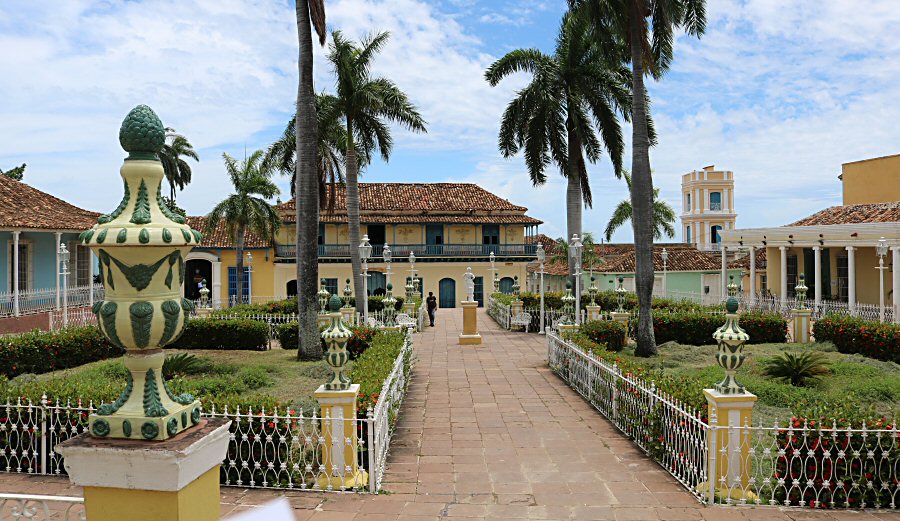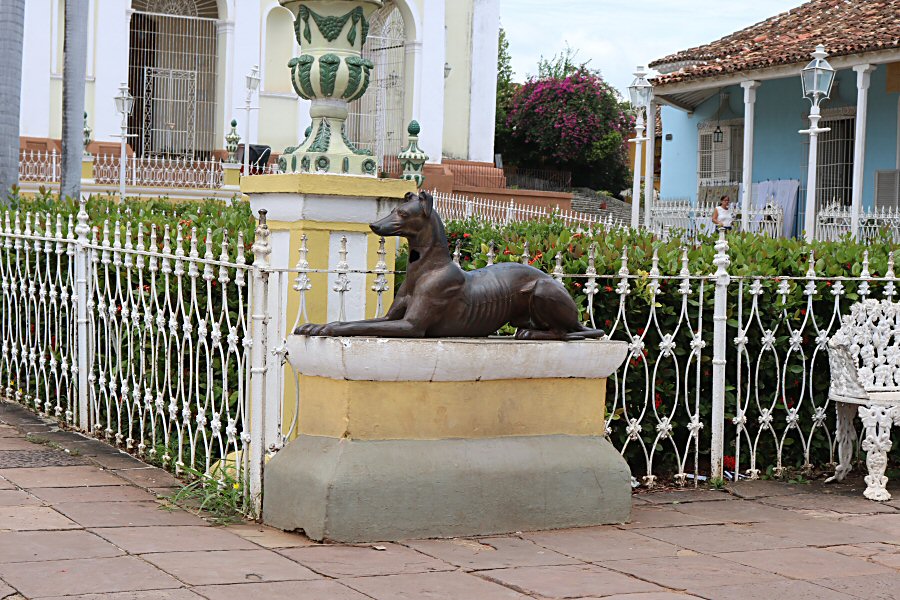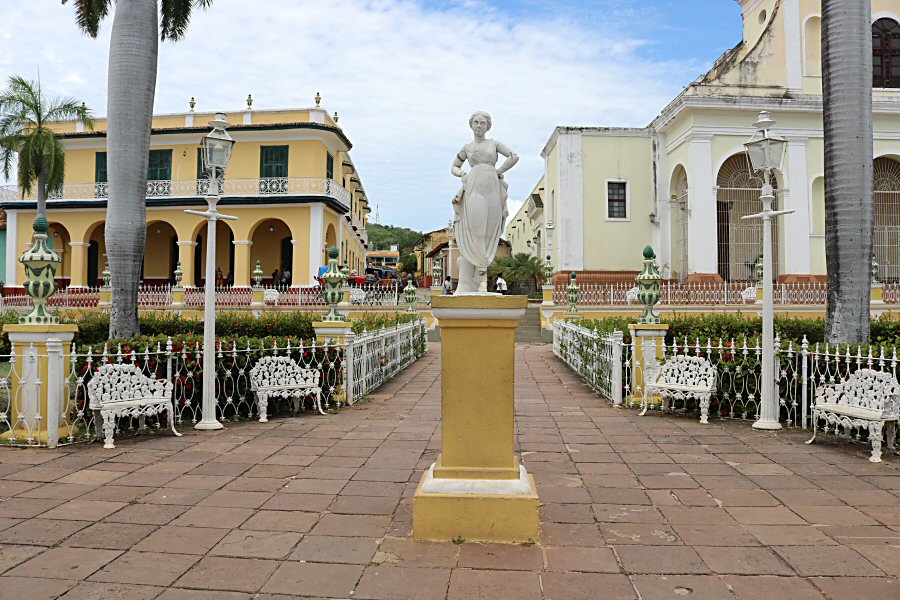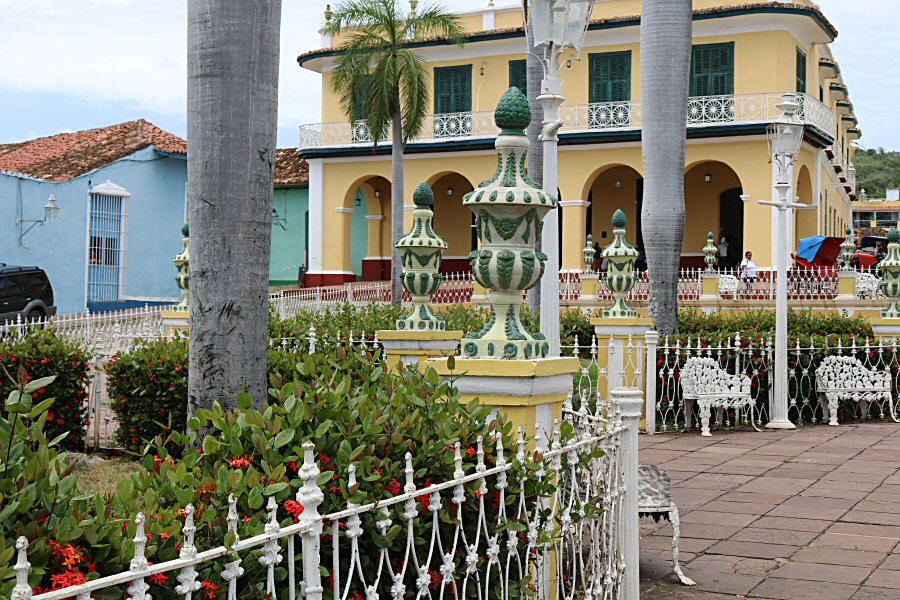
Architectural Features
Built on a gentle slope, the small square remains higher than the surrounding area on one side, so that it can be reached by climbing a few steps on its south west side. It is bordered by yellow low walls and white wrought-iron fences with delicate filigrees from the surrounding cobbled streets. The square is divided into four symmetrical and rectangular gardens by two paths that cut each other at right angles. Each garden contains a royal palm tree, a symbolic tree of the Cuban nation, in the center and decorative ceramic cups at the corners. On the circular area at the intersection of the paths, there is the marble sculpture of the Muse Terpsichore that was placed on a pedestal.
In Greek mythology, Terpsichore ("delight in dancing") is one of the nine Muses and goddess of dance and chorus. Terpsichore is usually depicted sitting down, holding a lyre, accompanying the dancers' choirs with her music.
Cast iron benches are placed around the central circular area. The wrought-iron lamp-posts illuminating the area are restored and preserved in its original form. Two cast-iron statues of English greyhounds from the Quinta de San Justo Germán Cantero, an illustrious landowner and Trinidadian intellectual of the nineteenth century, escort the entrance of the square. The area is paved with the so-called “Loza Bremesa”.
Built on a gentle slope, the small square remains higher than the surrounding area on one side, so that it can be reached by climbing a few steps on its south west side. It is bordered by yellow low walls and white wrought-iron fences with delicate filigrees from the surrounding cobbled streets. The square is divided into four symmetrical and rectangular gardens by two paths that cut each other at right angles. Each garden contains a royal palm tree, a symbolic tree of the Cuban nation, in the center and decorative ceramic cups at the corners. On the circular area at the intersection of the paths, there is the marble sculpture of the Muse Terpsichore that was placed on a pedestal.
In Greek mythology, Terpsichore ("delight in dancing") is one of the nine Muses and goddess of dance and chorus. Terpsichore is usually depicted sitting down, holding a lyre, accompanying the dancers' choirs with her music.
Cast iron benches are placed around the central circular area. The wrought-iron lamp-posts illuminating the area are restored and preserved in its original form. Two cast-iron statues of English greyhounds from the Quinta de San Justo Germán Cantero, an illustrious landowner and Trinidadian intellectual of the nineteenth century, escort the entrance of the square. The area is paved with the so-called “Loza Bremesa”.




